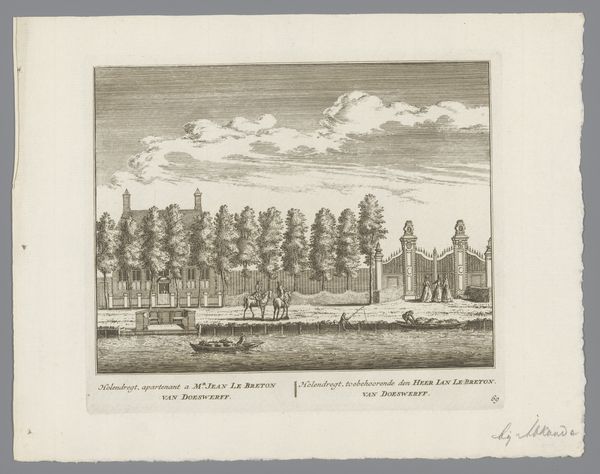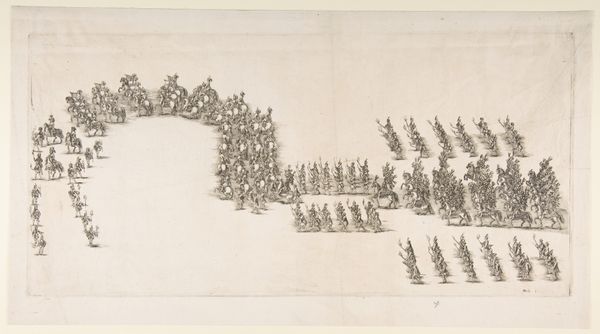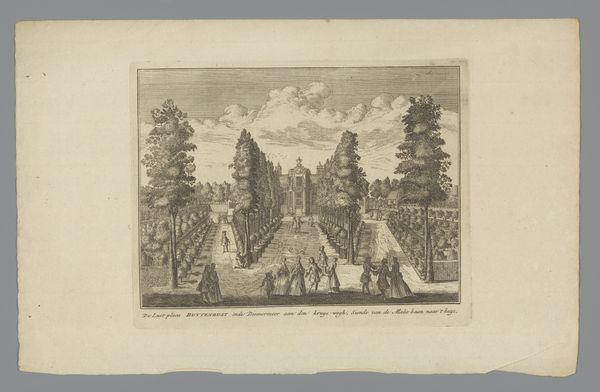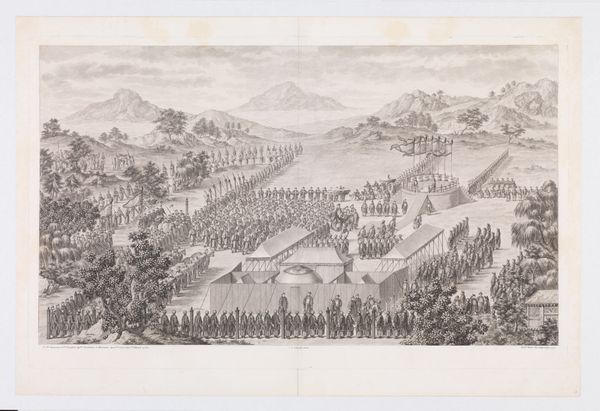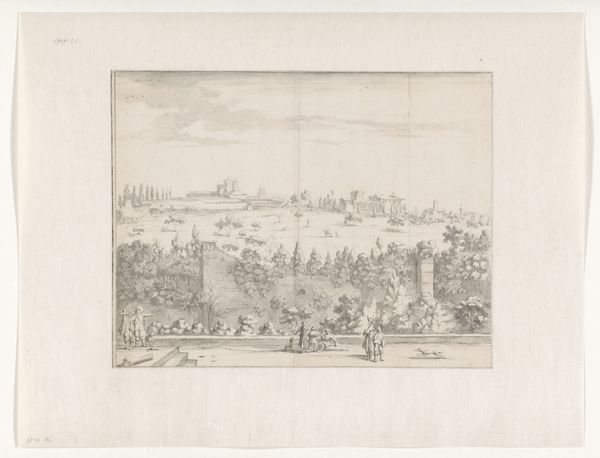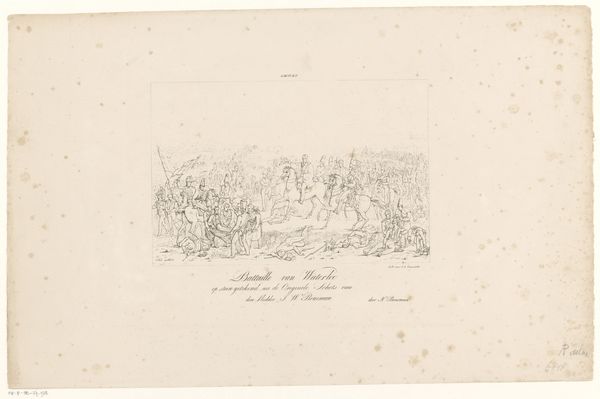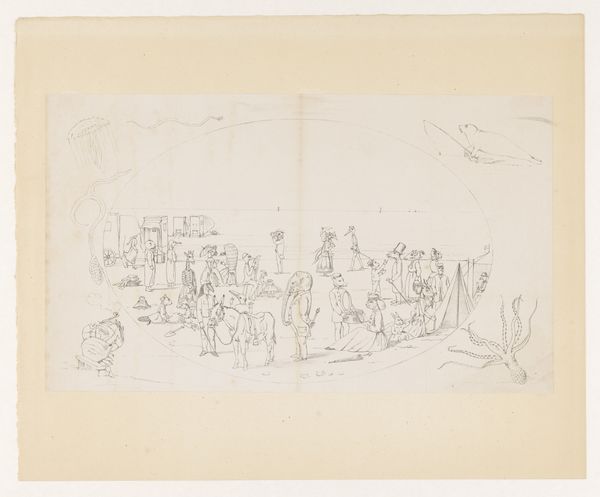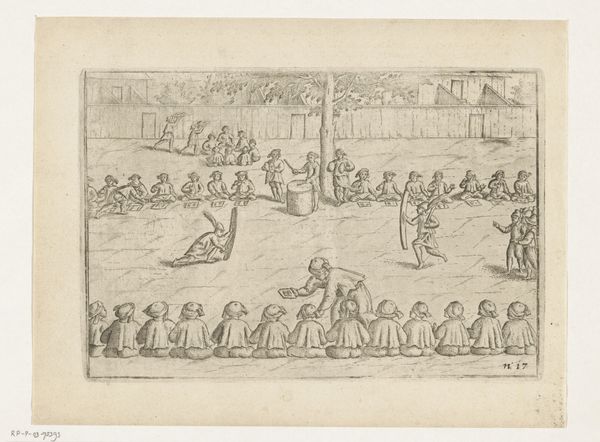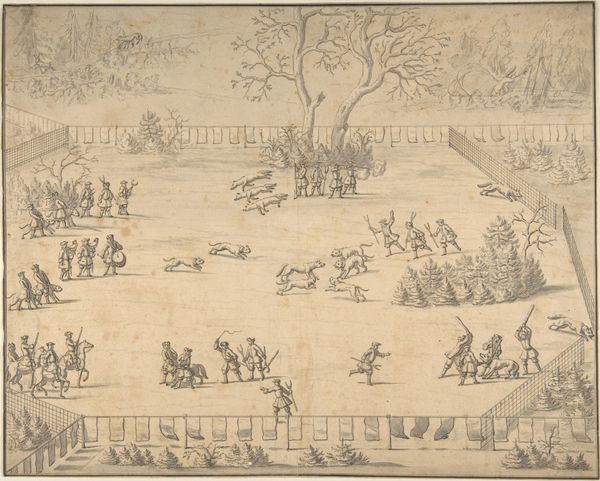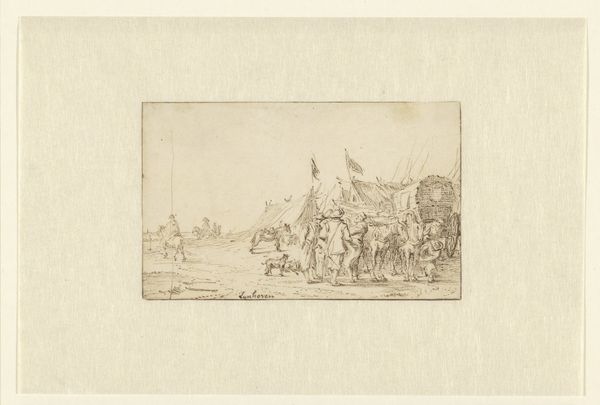
print, engraving
#
narrative-art
# print
#
asian-art
#
old engraving style
#
history-painting
#
engraving
Dimensions: height 145 mm, width 215 mm
Copyright: Rijks Museum: Open Domain
Editor: This engraving, "De koning van Ternate bezoekt de moskee, 1599," was created in the early 1600s by an anonymous artist. The depiction of this king's procession is so intriguing. What do you see in this piece that perhaps speaks to its broader historical context? Curator: The image, while seemingly straightforward, is a layered representation of power dynamics during early colonial encounters. Consider the very act of creating and disseminating this print: Whose perspective is centered, and who is being othered? Editor: I hadn't thought about it that way. So, it’s not just depicting a historical event, but framing it? Curator: Exactly. We see an Asian king visiting a mosque, rendered through a European lens. It raises questions about how cultural rituals are interpreted and often exoticized to feed colonial narratives. How do you think the artist's choices, consciously or unconsciously, contribute to this narrative? Editor: The linear perspective flattens the space and, in doing so, arguably diminishes the sense of depth and grandeur, perhaps downplaying the King's power. Also, it looks as if it were recorded like a historic event instead of having an appreciation for its spiritual significance. Curator: Precisely. The engraving aesthetic carries its own cultural baggage. Also consider Ternate’s crucial position in the spice trade. By controlling narratives like this, colonizers strengthened their claims. The artist and the intended audience were far removed from Ternate but complicit in the acts that would unravel the Ternate people. Editor: I see that so much more clearly now! Thanks for helping me consider this work within its complicated web of cultural and colonial narratives. Curator: Indeed. Reflecting on whose stories are told and, critically, how they are told empowers us to see the past with more nuanced perspectives.
Comments
No comments
Be the first to comment and join the conversation on the ultimate creative platform.
